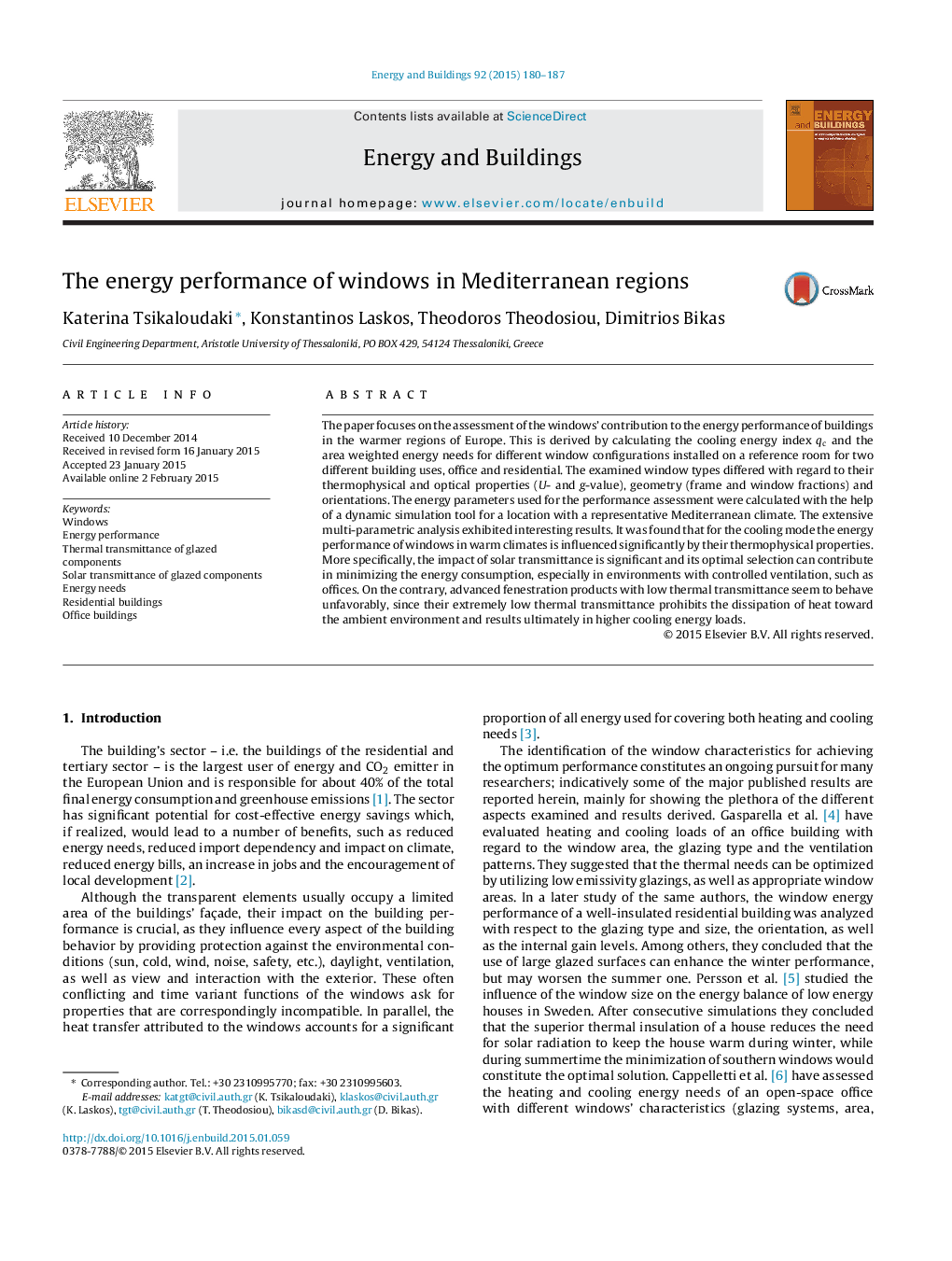| Article ID | Journal | Published Year | Pages | File Type |
|---|---|---|---|---|
| 6732071 | Energy and Buildings | 2015 | 8 Pages |
Abstract
The paper focuses on the assessment of the windows' contribution to the energy performance of buildings in the warmer regions of Europe. This is derived by calculating the cooling energy index qc and the area weighted energy needs for different window configurations installed on a reference room for two different building uses, office and residential. The examined window types differed with regard to their thermophysical and optical properties (U- and g-value), geometry (frame and window fractions) and orientations. The energy parameters used for the performance assessment were calculated with the help of a dynamic simulation tool for a location with a representative Mediterranean climate. The extensive multi-parametric analysis exhibited interesting results. It was found that for the cooling mode the energy performance of windows in warm climates is influenced significantly by their thermophysical properties. More specifically, the impact of solar transmittance is significant and its optimal selection can contribute in minimizing the energy consumption, especially in environments with controlled ventilation, such as offices. On the contrary, advanced fenestration products with low thermal transmittance seem to behave unfavorably, since their extremely low thermal transmittance prohibits the dissipation of heat toward the ambient environment and results ultimately in higher cooling energy loads.
Related Topics
Physical Sciences and Engineering
Energy
Renewable Energy, Sustainability and the Environment
Authors
Katerina Tsikaloudaki, Konstantinos Laskos, Theodoros Theodosiou, Dimitrios Bikas,
